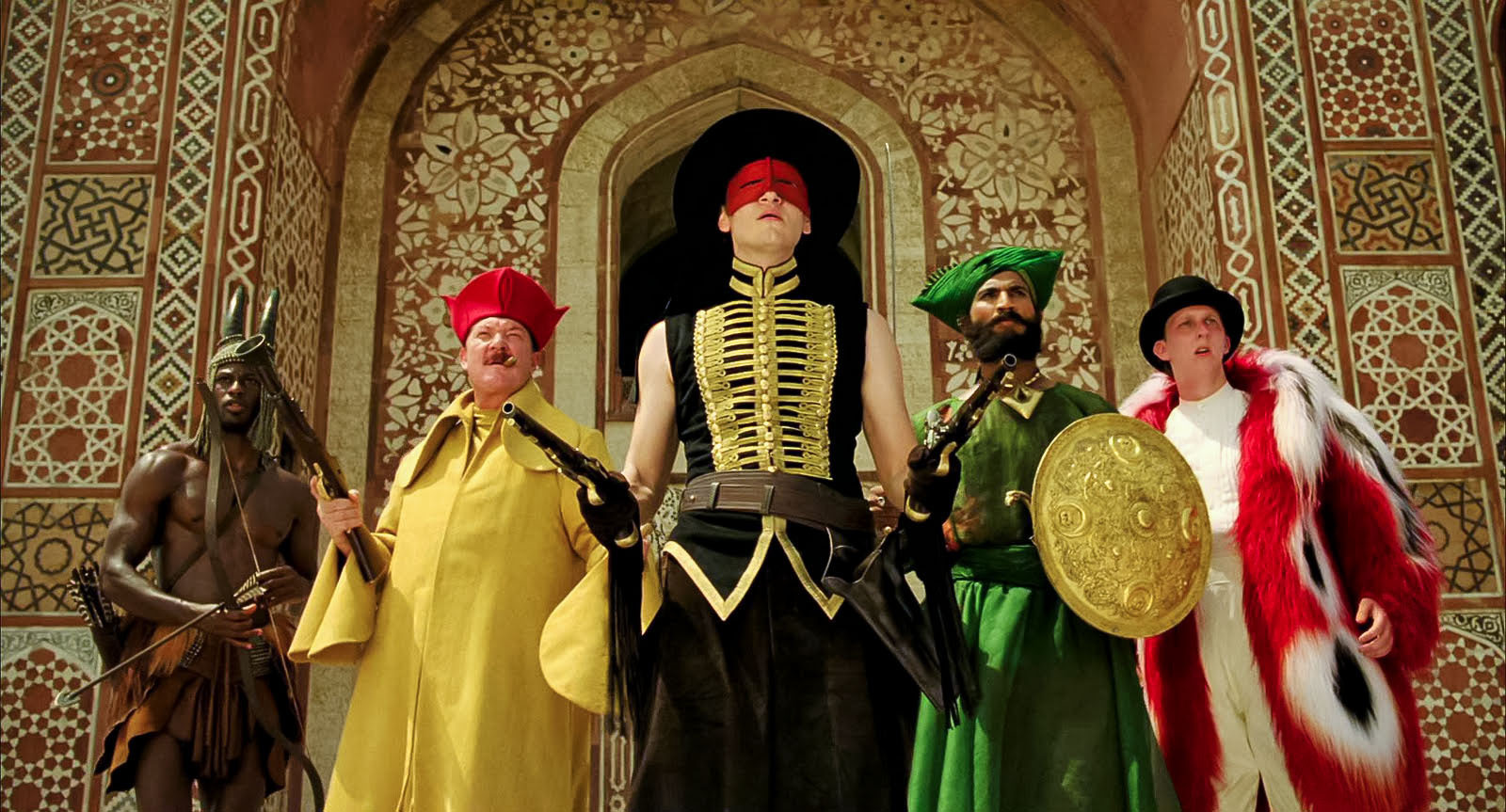
Here’s to one of the most important elements for visual satisfaction we derive from the seventh art: color. The dawn of the 21st century has seen some of the most splendid cinematic achievements in terms of color, taking things to the next level and harvesting the fruits of the seeds that were planted in the previous one. The color extravaganza of today’s cinema with its multi-hues use and saturated palettes is so explosive and omnipresent that it is hard to select only a few.
However we attempt to present some of the most influential and groundbreaking films in terms of color, while being representative of the international cinematic works that have brought joy and awe to our eyes. Here is a list devoted to the directors with the most colorful visions and the cinematographers who turned those into matter and gifted us with some of the most beautiful on-screen art.
20. La La Land (US, 2016, Damien Chazelle)
Cinematographer: Linus Sandgren
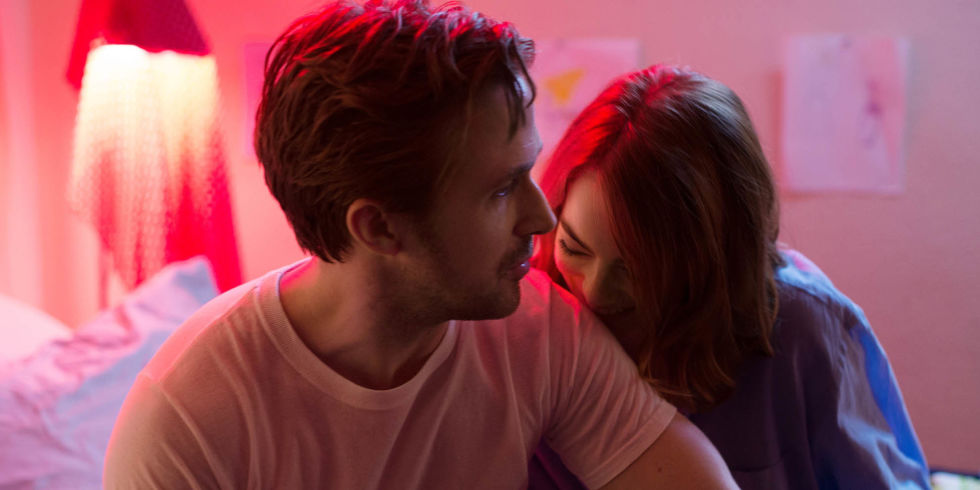
“La La Land” may have garnered wide critical acclaim and five Academy Awards, but that is not to say it hasn’t divided audiences. The opinion that it is an overly-hyped film of absent creativity and reliance on clichés is not infrequent among the lovers of the seventh art. It may be difficult to judge the originality of Damien Chazelle’s “La La Land,” but one cannot deny its superb use of light and color and the injection of pop-art beauty he delivers.
Mia Dolan (Emma Stone) is an aspiring actress with the prototypical Hollywood dreams and little money and patience. Sebastian Wilder (Ryan Gosling) is a struggling jazz pianist with a little more persistence but not much luck. Fate brings Mia and Sebastian together. Despite their love and admiration for each other, their passion for their individual dreams and ambitions often clashes.
Throughout the film, the viewer is on a joint roam with the characters, witnessing their complex and competitive lives and their doomed romance. However cliché “La La Land” can be, it is a fairly realistic depiction of the sacrifices and compromises everyone will have to make, and this contrasts harshly with its beautiful colors.
19. Zero Theorem (UK-Romania, 2013, Terry Gilliam)
Cinematographer: Nicola Pecorini
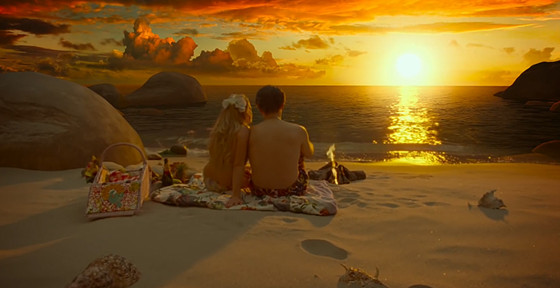
Qohen Leth (Christoph Waltz) is a lonesome computer programmer going through existential angst. His home is an abandoned church where he spends most of his time, waiting for a call that is supposed to tell him what is the meaning of life. Qohen works for Mancom and is soon requested to work on an infamous project: Zero Theorem.
The project seeks to reveal the absence of meaning and Qohen reluctantly agrees to work on it whilst in the care of Bainsley (Melanie Thierry), a flirtatious caretaker assigned to assist him by The Management (Matt Damon), and assistance of wonder kid programmer Bob (Lucas Hedges).
The strange thing about the colors of “Zero Theorem” is that they deviate from natural colors so much that their intensity both immerses us inside the frame and “throws us” out at the same time due to the same factor: saturated and neon colors that we rarely encounter in a naturalistic setting.
Again, the color grading has its emotional impact and conveys the essence of the dystopian world of the film, and Qohen Leth himself. Leth is always in black and surrounded by darkness when secluded at his home. On the contrary, “the outside world” with which Leth forcefully interacts on occasion is full of day glow, neon, and synthetic shades, which ends up being harsh instead of redeeming and cheerful – both for Leth and the viewer.
The golden shades of the idyllic beach where Qohen and Bainsley escape are overarched by a sickly Matrix-like green, which again is to denote the aberration and abolishment of nature since this escape is only happening in the virtual reality that is created by Bainsley’s mind and the aid of software.
18. The Great Beauty (Italy, 2013, Paolo Sorrentino)
Cinematographer: Luca Bigazzi
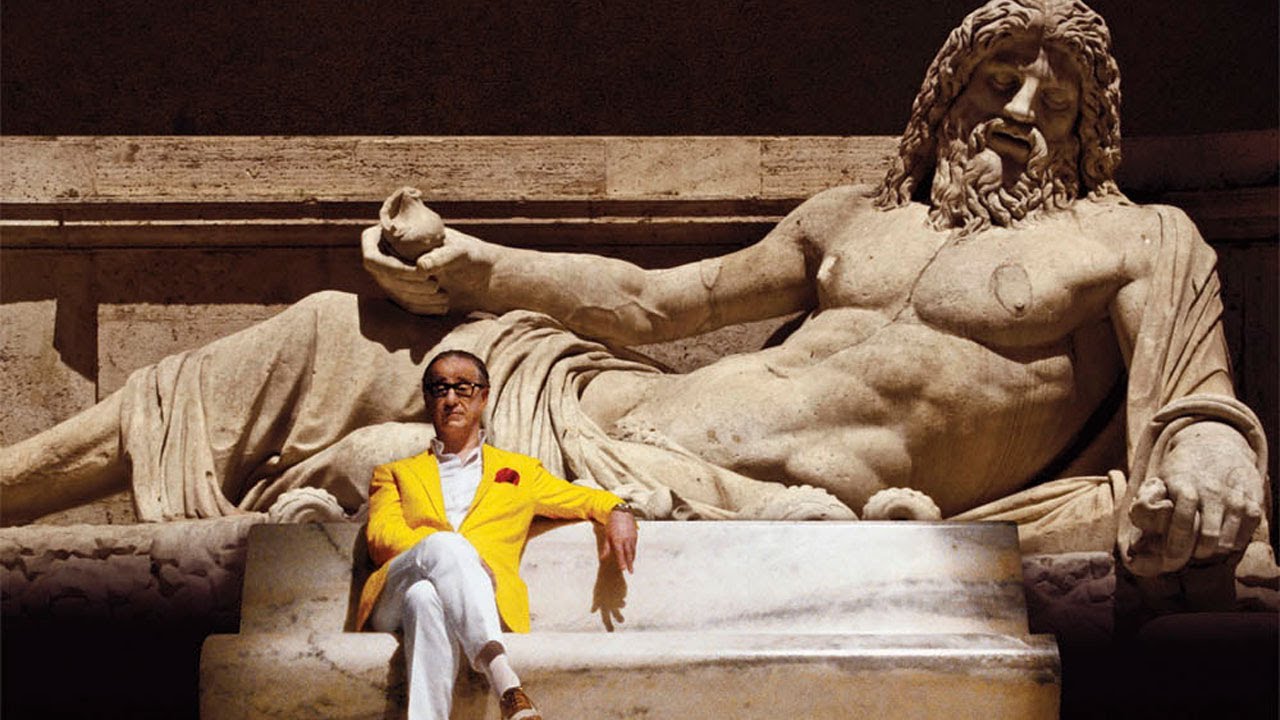
“The Great Beauty” is an approximation of natural light in its scenic depiction; however, when it comes to its characters and luxurious clubs, restaurants and art galleries saturated shades of every color are present in abundance. How else would Paolo Sorrentino render in drawing what the main character refers to as the “high life”?
Set in modern day Rome, the Italian upper class conducts a hedonistic lifestyle similar to that of their infamous ancestors. Our antihero and guide to this world is Jep Gambardella (Toni Servillo), a famous writer and journalist who enjoys partying, socializing, and being in the company of beautiful women.
After his 65th birthday, he gets nostalgic about the past and embarks on a mental journey in time and space, reminiscing about his glorious years, the people he met, and most importantly, his beloved Rome and its changes through the years. He realizes he has lived a superficial life, so he begins to search for a beauty that transcends the decadence of the high life and the routine of the everyday life.
“The Great Beauty” achieves a heartwarming balance between the natural Mediterranean light and synthetic pop color, and is an elegy to the of beauty of life as well as the deprivation of its meaning, in both vision and substance.
17. Post Tenebras Lux (Mexico, 2012, Carlos Reygadas)
Cinematographer: Alexis Zabé
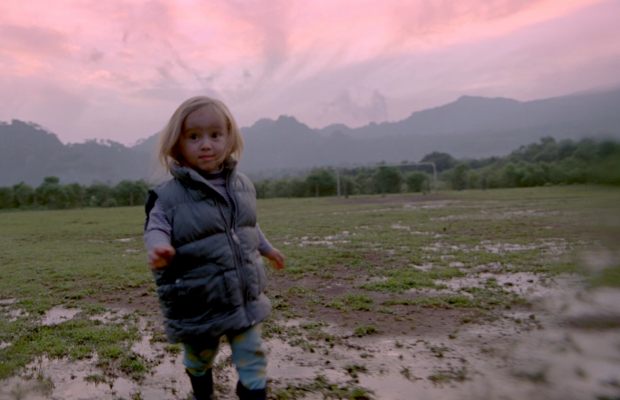
“Post Tenebras Lux” is not a typically a film that would be characterized as “colorful.” Most scenes are rather naturalistic with no notable deviation from the naturally occurring colors of the Mexican countryside. However, a few scenes stand out for their radical use of color, which comes in sharp contrast with the majority of the frames. Such is the opening scene where a little girl is seen swirling around in the company of cows and absence of men, in a land that seems almost post-apocalyptic and obsolete.
The most iconic scene is probably the one that comes right after: a red devil-like animated figure that enters a family house and wonders around in the blue-black of the night, illuminating and painting the walls with his shade. In other scenes, beautiful color contrasts are depicted, using opposite shades from a very specific palette, such as in the swinger’s sauna scene, with red and green dominating the frame, resembling the color palette of Hitchcock’s “Vertigo.”
Juan (Adolfo Jimenez Castro) and his wife Natalia (Nathalia Acevedo) live with their two children in a rural area. Although initially they enjoy the simple and pure life of the countryside, this slowly changes, impacting their marriage. Juan is encouraged to joined Alcoholics Anonymous meetings by Seven (Willebaldo Torres). The problems of every member of the small community are communicated through the film, composing the portrait of rural culture and the impact of the characters’ shortcomings on daily life.
16. Samsara (US, 2011, Ron Fricke)
Cinematographer: Ron Fricke
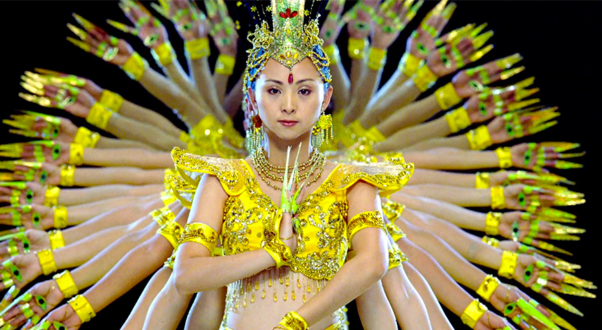
Ron Fricke’s expansion of his 1992 “Baraca” is a silent tale of past and present life and all the mysteries of nature, as well as oddities of modern life. The ambition behind “Samsara” was to create a visual experience that is neither film nor documentary but more of a “guided meditation” through Fricke’s lens. To facilitate this elaborate project, producers Fricke and Magidson gathered material from photo books, YouTube, and the internet and shot in 70mm.
Much like “The Fall,” “Samsara” took more than four years of filming and took place in 25 countries. The end product embodies the original ambition of its visionaries, creating a meditative, colorful, singular, and wholesome film.
15. Les Amours Imaginaires (Canada, 2010, Xavier Dolan)
Cinematographer : Stéphanie Anne Weber Biron
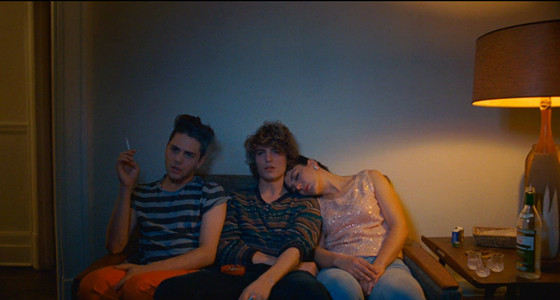
Something between hipster and retro, depth and narrowness, warm and cold colors is “Les Amours Imaginaires,” and is a perfect film for and from millennials. Xavier Dolan’s talent for creating complex female characters and using saturated shades of everything is evinced here once again.
And although ingenious and novel, Dolan’s style and his influences could be described as “Almodovar meets Lichtenstein.” One of the most cheerful occurrences in Dolan’s “Les Amours Imaginaires” is that it is somewhat of a soap opera parody.
The film largely relies on the plain and common feelings of its characters, who experience those universal emotions in great intensity because of the little drama queen each of them hides inside, as well as the typical emotional and experiential intensity of youth. And through his lens, Dolan both glorifies the infatuations of the heroes but makes fun of them at the same time. Moreover, the film stands out for its colors in both interiors and exteriors, with many frames looking like a pop-art comic strip.
Maria (Monia Chokri) is close friends with Francis (Dolan). The two meet Nicolas (Niels Schneider) at a dinner party. Even though they feign indifference, quickly it becomes apparent that they are both infatuated with Nicolas. The three form a close friendship and spend loads of time together, with Francis and Marie constantly competing for Nicola’s affection and undermining each other’s efforts.
14. Uncle Boonmee Who Can Recall His Past Lives (Thailand, 2010, Apichatpong “Joe” Weerasethakul)
Cinematographer: Sayombhu Mukdeeprom
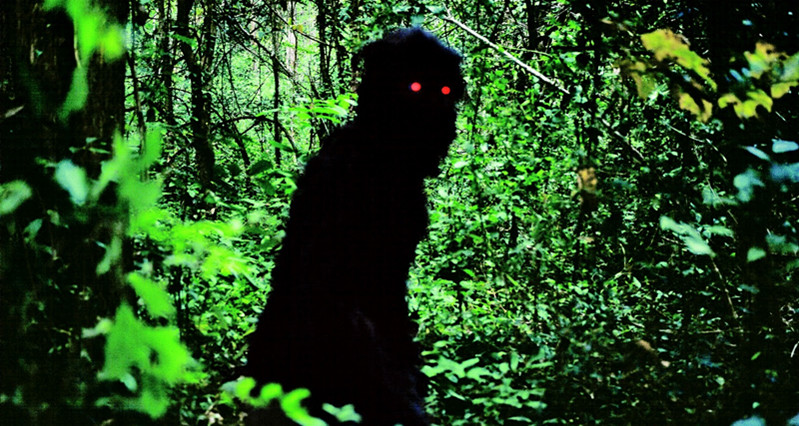
“Colorful” kind of concurs in the collective subconscious with saturated and intense colors; however, a film can be just as rich in color while employing the most de-saturated shades of the multiple hues it makes use of. Such an example is “Uncle Boonmee Who Can Recall His Past Lives.”
Making excellent use of this muted palette and having perfect control of all the shades present in the frame, “Uncle Boonmee” – which resembles cinematographically “ You, the Living” by Roy Andersson – employs murky colors but does so in such detail and depth that ends up being colorful even though desaturated and muted. Hence, the beauty of nature, spirit, and man as well as the mysteries of life and death is wonderfully captured in Weerasethakul’s film about a man living out his last days.
Uncle Boonmee (Thanapat Saisaymar) gathers his beloved one’s – living and dead – and explores his past lives, while contemplating the discourse of his illness and the imminent end of his present form.
13. Enter the Void (France-Germany-Italy-Canada, 2009, Gaspar Noé)
Cinematographer: Benoît Debie
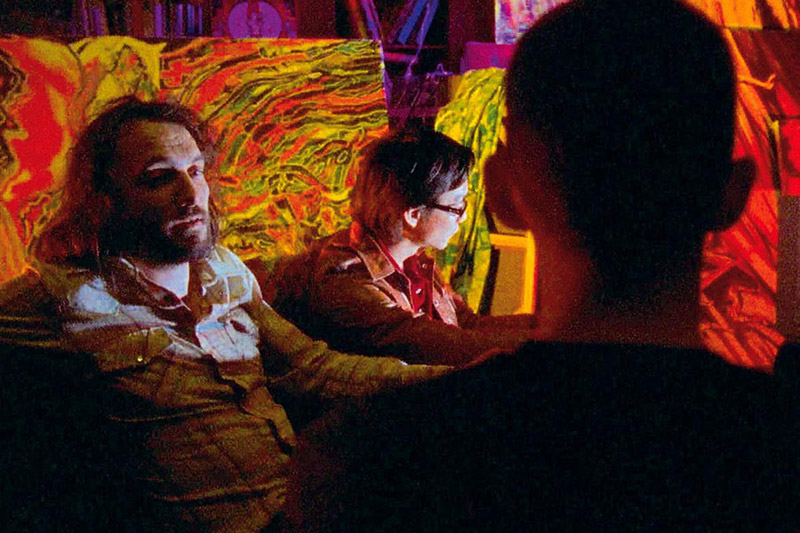
“Enter the Void” is a must-watch for those who love photosensitive epilepsy-like color use. Gaspar Noe’s multi-neon palette comes from another dimension, just like the occurrences of the film. “Enter the Void” is truly special because of its confounded elements: filming from the main character’s point of view with the camera imitating even the blinking of his eyes, and using scenes with the integration of organic hyper-colorful patterns which are experienced by Oscar during his DMT trip.
Oscar (Nathaniel Brown) lives in Tokyo with his sister Linda (Paz de la Huerta). Having lost their parents in a car crash during their childhood, Oscar and Linda are now supporting themselves by dealing drugs (Oscar) and stripping (Linda).
Shortly after his first DMT trip, Oscar is called by a client to meet in “the Void,” a dodgy club where he ultimately gets shot by the police for drug possession. From this point onward, we again see everything through Oscar’s eyes, only now it is his ghost’s point of view – and ghosts don’t blink.
12. Broken Embraces (Spain, 2009, Pedro Almodóvar)
Cinematographer: Rodrigo Prieto

Pedro Almodóvar’s artistry has been synonymous with pop-saturated use of color since the beginning of his career, with a linear increase since his first films. A quick acquaintance with the recurrent themes and interests present in his filmography lets us understand the relevance and necessity for the voluptuous use of color.
“Broken Embraces” is a romantic thriller about a blind writer by the name of Harry Caine (Lluis Homar) who, upon hearing about the death of millionaire Ernest Martel (José Luis Gómez García), starts reminiscing about his tragic love for Lena Rivera (Penelope Cruz), an actress who was unwillingly married to Ernesto. The main plot line is a flashback to 1992 where the events took place, and is told by Harry to Diego (Tamar Novas), the son of his housekeeper, whom Harry is tending for after a drug overdose.
Almodovar’s films are characterized by such melodramatic plotlines with detailed portrayals of his characters and emphatic breadth of emotional repertoire. Almost any of his films could make an anthology about the exceptional color use in film. However, “Broken Embraces” may be distinguished due to its perfect merging of color-situation specificity and excellent performances.
11. Avatar (UK-US, 2009, James Cameron)
Cinematographer: Mauro Fiore

The development of “Avatar” was a laborious project but one that paid off, literally and metaphorically. The building blocks for “Avatar” were already there in the ‘90s and principal photography begun took years before its theatrical release, which explains the perfect symbiosis of colors, computer-generated characters, and live environments. As James Cameron has suggested, the film is a philosophical action-adventure, touching upon imperialism on the grounds of extraterrestrial expansion of humans as well as deep ecology.
Additionally, the thematic similarities that the film shares with other films like “Princess Mononoke” has been acknowledged by Cameron. However plethoric the influences from science fiction and fantasy ouvres may be, “Avatar” remains its own very unique universe of visual, social, and ecological ideas.
It beautifully builds upon the interrelations of Earth, the newly found and habitable Pandora Moon in the Alpha Centauri star system, the depths of the forest and land which the Na’vis harvest and worship, and the universe that embraces all this matter and living entities. The signature colors of “Avatar” are blue, green, and purple, most vivid and abundant in the forest areas, creating an atmosphere similar to that of the ocean, whereas the blue Na’vi figures resemble Hindu deities.
The plot revolves around Jake Sully (Sam Worthington) a paraplegic former Marine. Sully is reluctantly trusted by Dr. Grace Augustine (Sigourney Weaver) to replace his deceased brother as an operator of an “avatar,” a human- Na’vi hybrid designed to resemble the blue-skinned sapient humanoids that inhabit the Pandora Moon of the Alpha Centauri star system. As an avatar, Jake retains his human mind, but is entangled in an alien body. Soon, he finds himself torn between the two worlds and forms of being.